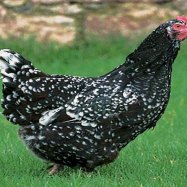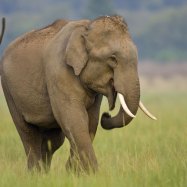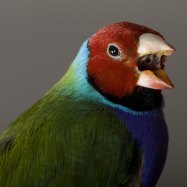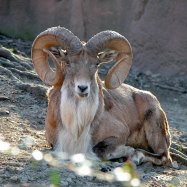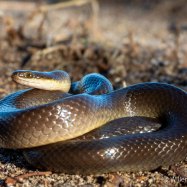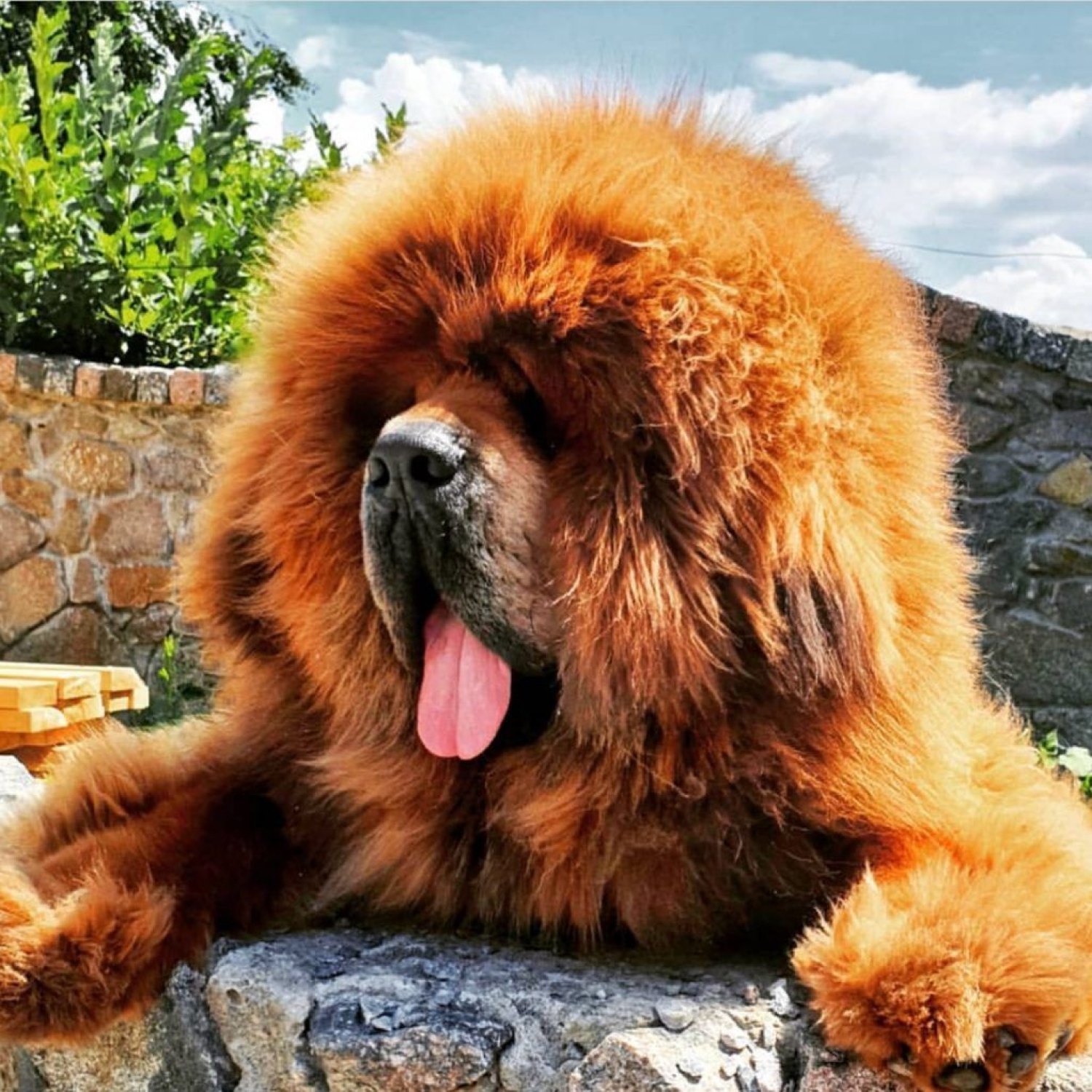
Tibetan Mastiff
61-79 cm
Meet the majestic Tibetan Mastiff, a large and muscular dog breed hailing from the Tibetan Plateau. With a length of 61-79 cm, this member of the Canidae family is known for its thick and shaggy coat. These loyal and protective animals make great guard dogs, but require proper training and socialization. #TibetanMastiff #Canidae #TibetanPlateau #dogbreed
Animal Details Summary:
Common Name: Tibetan Mastiff
Kingdom: Animalia
Habitat: Mountains
Tibetan Mastiff: The Mighty Canine of the Mountains
Deep in the mountains of Asia resides a majestic and powerful creature known as the Tibetan Mastiff. This large and muscular dog has captured the hearts of many with its striking features and formidable presence. With a scientific name of Canis lupus familiaris, the Tibetan Mastiff is a member of the Canidae family and is classified under the class Mammalia in the phylum Chordata. But what makes this canine truly remarkable goes beyond its scientific classification Tibetan Mastiff. Let's delve deeper into the extraordinary characteristics of the Tibetan Mastiff.Ancient Breed and Country of Origin
The Tibetan Mastiff's history dates back to ancient times, with records of its existence tracing back to 1121 B.C. Originating from Tibet, this canine was bred to guard nomadic tribes and protect their herds from predators. Due to its location, the Tibetan Mastiff adapted to harsh weather conditions and developed thick coats to survive the extreme cold of the Tibetan Plateau. Its ability to adapt and thrive in challenging environments has made this breed a symbol of strength and endurance.Habitat and Geographical Distribution
The Tibetan Mastiff's natural habitat is the mountains, specifically the Himalayas and the Tibetan Plateau. They are commonly found in Nepal, India, China, and of course, Tibet – the country of their origin. These dogs have a strong connection to the mountains and are well-suited for high altitudes, making them the perfect guardians for mountain dwellers Tenrec. However, with the rise in popularity of this breed, they can now be found in different parts of the world, including the United States, Europe, and Australia.Majestic Appearance and Body Shape
One look at the Tibetan Mastiff, and it's easy to see why it has become a sought-after breed. With a formidable appearance and a regal stance, this canine exudes strength and power. They have large, bulky bodies, ranging from 61cm to 79cm in length, and can weigh up to 70kg. Their fur comes in various shades of black, brown, gray, and gold, and is thick and dense, making it perfect for the cold mountain weather. The Tibetan Mastiff also has a thick mane around its neck, adding to its majestic appearance.Carnivorous Diet
The Tibetan Mastiff is a carnivore, like most dogs, and is built to hunt and survive on a meat-based diet. In their natural habitat, they mostly eat marmots, voles, and other small mammals. However, in domestic settings, their diet consists of high-quality dog food with a balanced macronutrient profile. Being large and active dogs, the Tibetan Mastiff requires a diet rich in protein to support their muscular build and energy needs.A Unique Personality
Beneath its intimidating appearance, the Tibetan Mastiff has a gentle and affectionate personality. They are known to be loyal and protective of their families, making them excellent guard dogs. However, proper training and socialization are crucial for this breed, as their protective instincts can sometimes get a little too overbearing. Interestingly, the Tibetan Mastiff has a strong sense of independence, making it an ideal companion for those who appreciate an autonomous pet.The Perfect Guardian
As mentioned earlier, the Tibetan Mastiff was originally bred to guard and protect livestock. With their large size and protective nature, this breed is still widely used for these purposes in Tibet. They are capable of defending against predators like wolves and bears, and their loud bark can alert their owners of any potential danger. In recent years, this breed has become a popular choice for guard dogs, with their imposing presence serving as an effective deterrent for potential intruders.Prized Possessions
Due to their stunning appearance and rareness, Tibetan Mastiffs are often considered a status symbol in many Asian countries. They are highly valued, and it's not uncommon for them to sell for thousands of dollars. Unfortunately, this has led to unethical breeding practices, with some breeders prioritizing profit over the welfare of the animals. It is crucial to do thorough research and only purchase from reputable breeders to ensure the well-being of these beautiful animals.Raising a Tibetan Mastiff
While the Tibetan Mastiff may seem like the perfect pet for those who appreciate big dogs with strong personalities, it's important to understand that they are not a breed for everyone. As mentioned earlier, this breed requires proper training and socialization from an early age to avoid any behavioral issues. They also require ample exercise to keep them happy and healthy, so a large yard or frequent trips to the park are necessary. Additionally, their thick coats require regular brushing to prevent matting and keep their fur healthy.Is the Tibetan Mastiff Right for You?
Now that you know more about the Tibetan Mastiff, is this breed the right fit for you? Well, if you're an outdoor enthusiast living in a colder climate, and are looking for a loving and loyal companion who is also a great guard dog, then the Tibetan Mastiff might just be the perfect match. However, if you live in warmer climates, or prefer a low-maintenance pet, then this breed may not be the best fit.Whether you're drawn to their majestic appearance, their protective nature, or their rich history, there's no denying the unique and alluring qualities of the Tibetan Mastiff. From guarding nomadic tribes to becoming a prized possession, this breed has come a long way. Let's continue to appreciate and cherish these beautiful creatures, and ensure their well-being by choosing responsible breeders and caring for them with love and respect.

Tibetan Mastiff
Animal Details Tibetan Mastiff - Scientific Name: Canis lupus familiaris
- Category: Animals T
- Scientific Name: Canis lupus familiaris
- Common Name: Tibetan Mastiff
- Kingdom: Animalia
- Phylum: Chordata
- Class: Mammalia
- Order: Carnivora
- Family: Canidae
- Habitat: Mountains
- Feeding Method: Carnivorous
- Geographical Distribution: Asia
- Country of Origin: Tibet
- Location: Tibetan Plateau
- Animal Coloration: Various shades of black, brown, gray, and gold
- Body Shape: Large and muscular
- Length: 61-79 cm
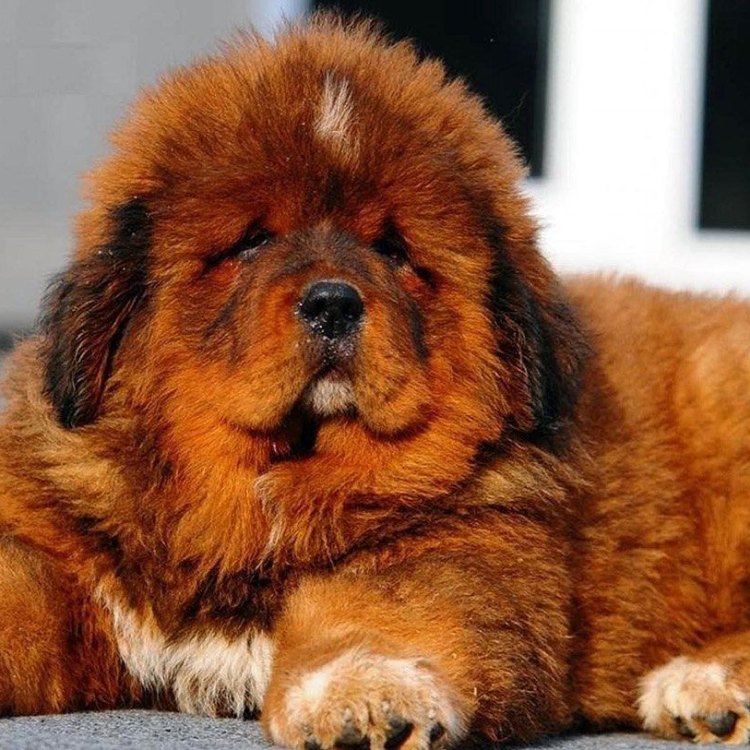
Tibetan Mastiff
- Adult Size: Females: 61-71 cm, Males: 66-79 cm
- Average Lifespan: 10-14 years
- Reproduction: Sexual
- Reproductive Behavior: Breeding occurs once a year
- Sound or Call: Deep barks
- Migration Pattern: Non-migratory
- Social Groups: Pack
- Behavior: Protective, loyal, and independent
- Threats: Habitat loss, poaching
- Conservation Status: Not officially recognized
- Impact on Ecosystem: Maintains balance in the prey population
- Human Use: Guard dog
- Distinctive Features: Thick double coat, large size
- Interesting Facts: One of the largest and most ancient dog breeds
- Predator: No natural predators
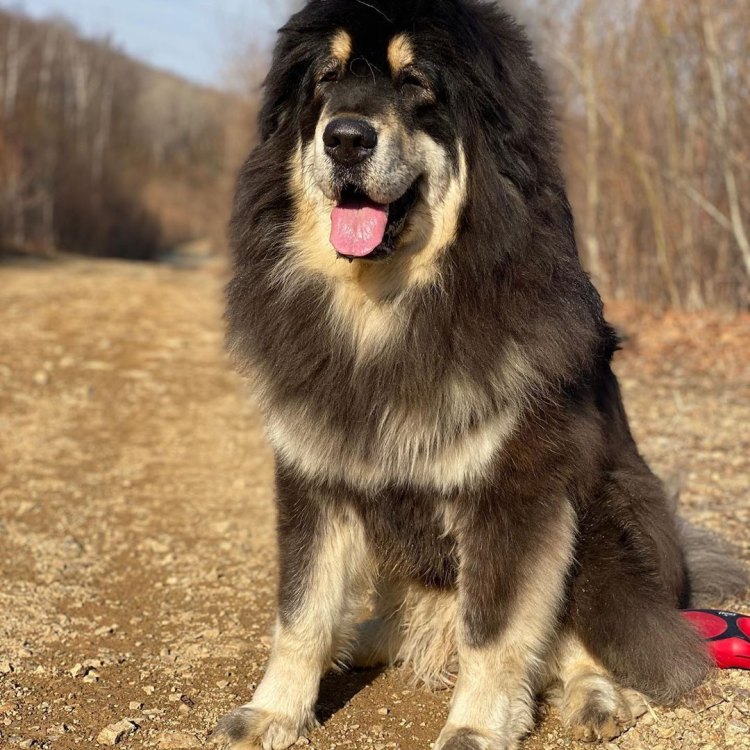
Canis lupus familiaris
The Mighty Tibetan Mastiff: A Loyal Guardian of the Himalayas
The snow-capped peaks of the Himalayas hold many secrets, including one of the largest and most ancient dog breeds in the world – the Tibetan Mastiff. With its striking appearance and impressive size, this breed has captured the hearts of dog lovers and earned a reputation as a formidable guardian. But there is more to this magnificent creature than meets the eye.Adult Tibetan Mastiffs are known to reach heights of 61-71 cm for females and 66-79 cm for males, making them a formidable presence PeaceOfAnimals.Com. However, their size is only matched by their impressive lifespan, with an average of 10-14 years. This long lifespan is a testament to their resilience and ability to adapt to different environments.
Reproduction in Tibetan Mastiffs follows the traditional sexual method, with breeding occurring only once a year. This behavior is influenced by their natural habitat, as these dogs are non-migratory, preferring to stay close to their pack and territory. Speaking of packs, this breed is highly social and typically lives and hunts in packs.
Their behavior is a mix of protective, loyal, and independent traits. While they are fiercely protective of their families, they are also known to be independent and self-sufficient, making them ideal for guarding tasks. In their native home in the Himalayas, Tibetan Mastiffs were often used to guard flocks of sheep and protect livestock from predators such as wolves and bears.
One of the most distinct features of the Tibetan Mastiff is its thick double coat, which serves as insulation from the harsh mountain weather Telescope Fish. This double coat also provides protection from predators and helps in maintaining body heat in colder climates. In addition, this breed has a powerful build, with strong muscles and a broad chest, making them adept at working in rugged terrains.
Despite their formidable appearance and protective nature, Tibetan Mastiffs are surprisingly gentle and affectionate with their families. They are known to be great with children and make excellent family pets. However, they do require a strong and experienced owner who can handle their independent nature and assertive personality.
Unfortunately, the Tibetan Mastiff's natural habitat is under threat due to human activities such as habitat loss and poaching. These activities have not only affected the population of this magnificent breed but also the delicate ecosystem of the Himalayas. The Tibetan Mastiff plays a crucial role in maintaining balance in the prey population, and any decline in their numbers can have a cascading effect on the entire ecosystem.
Despite their critical role in the Himalayan ecosystem, the Tibetan Mastiff is not officially recognized as a conservation priority. This lack of recognition puts them at an even higher risk of endangerment and highlights the need for conservation efforts to protect this breed and their habitat.
Apart from their role in maintaining the ecosystem, Tibetan Mastiffs have also been a significant part of human culture for centuries. In the past, they were often used by Tibetan nomads and Monks as guard dogs for their monasteries and homes. Today, they are still used as guard dogs in many parts of the world, including Europe and the United States.
Their unique features and imposing presence have also made them a popular choice among celebrities, with stars like Brad Pitt, Tom Cruise, and Jack Ma owning Tibetan Mastiffs. However, their popularity has also resulted in unethical breeding practices, leading to serious health issues in some of these dogs.
Despite their extensive history and presence in popular culture, Tibetan Mastiffs are not without their share of interesting facts. For example, they are known to have deep barks, making them excellent watchdogs. They are also one of the few breeds with no natural predators, thanks to their size and protective nature.
Since their natural habitat is in the mountains, Tibetan Mastiffs have evolved to have extraordinary agility and strength, making them highly efficient hunters. In addition, their thick coat makes them resistant to extreme weather conditions, ensuring their survival in the harsh Himalayan climate. These impressive adaptations have earned them the title of one of the most ancient dog breeds in the world.
In conclusion, the Tibetan Mastiff is much more than a giant and beautiful dog breed. They are a vital part of the Himalayan ecosystem, and their decline can have devastating effects on the delicate balance of the region. As such, it is crucial to recognize and protect this breed, not just for their physical appearance and celebrity owners, but for their critical role in maintaining a healthy and balanced ecosystem. Let us appreciate and cherish the mighty Tibetan Mastiff for all that they are and all that they do.
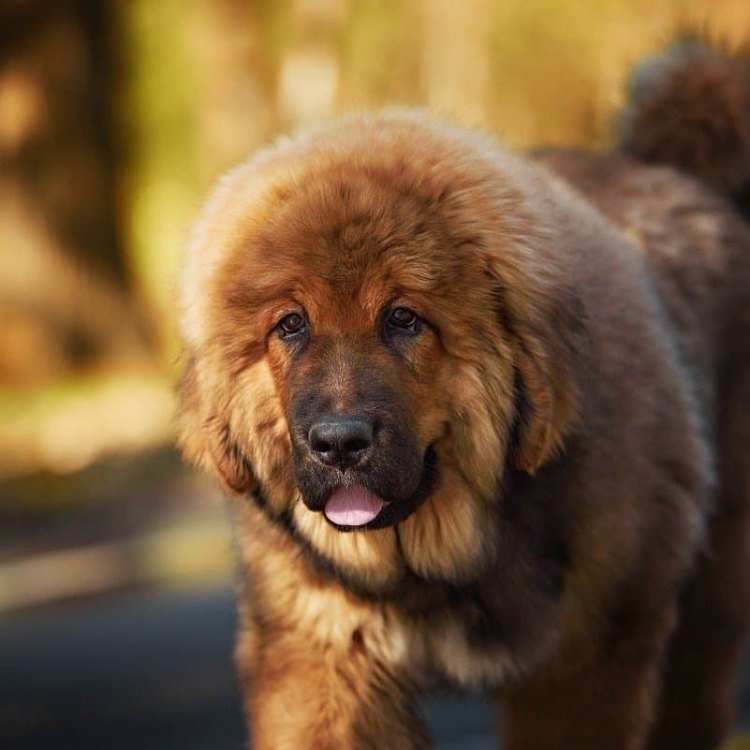
Tibetan Mastiff: The Mighty Canine of the Mountains
Disclaimer: The content provided is for informational purposes only. We cannot guarantee the accuracy of the information on this page 100%. All information provided here may change without prior notice.


